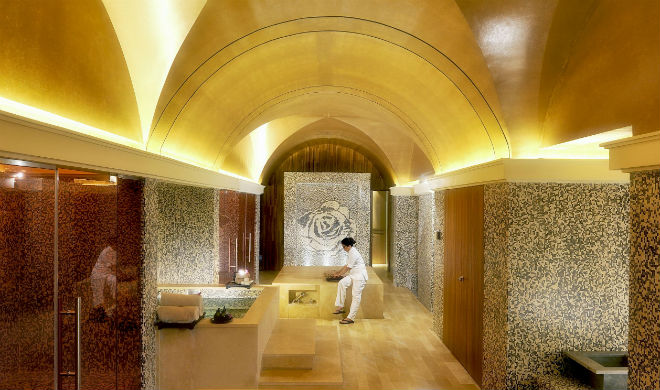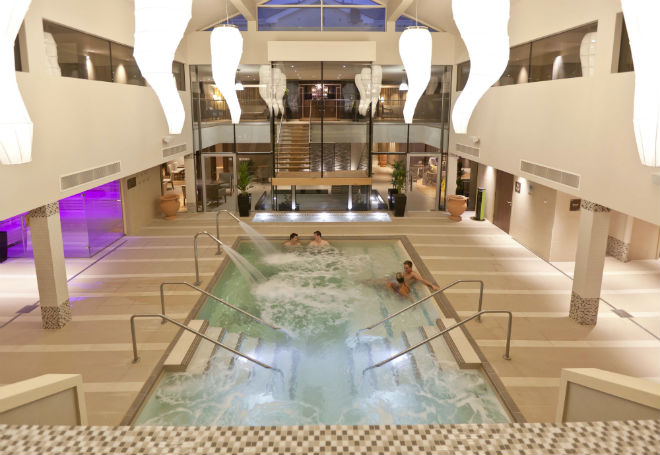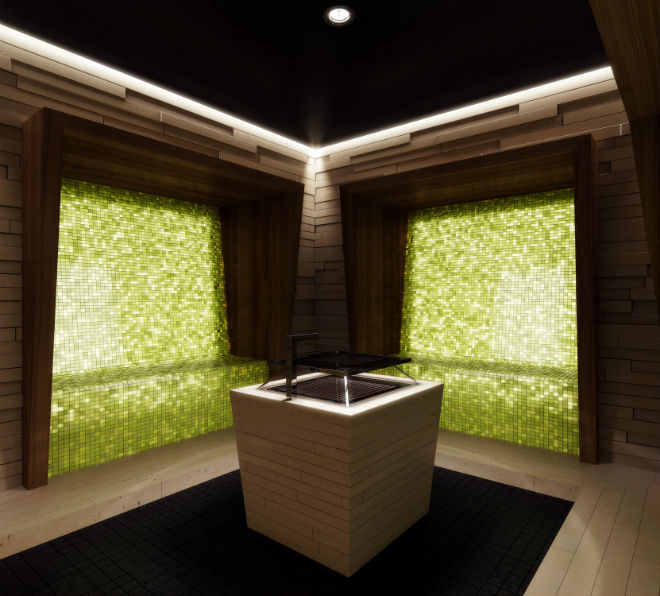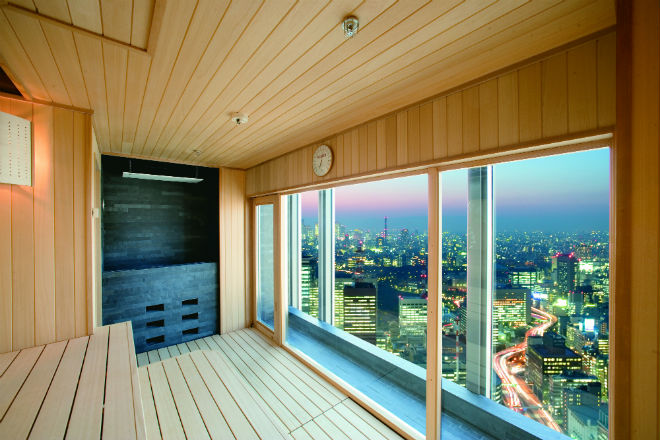Hot right now
WORDS SUZANNE BEARNE
Forget last year’s talk of cold experiences such as snow rooms, hotter temperatures are now back in vogue, according to spa experts, who have poured iced water on suggestions that cold is the new hot – one of the key spa trends predicted by industry analysts last year.
Andrew Gibson, group director of spa for the Mandarin Oriental Hotel Group, says: “Trend predictors tell us we should be putting in snow rooms. It seems that the whole industry is talking about having these items but I don’t see any added value.”
Meanwhile Raoul Andrews, president of US consultancy Aspen Resorts International, says that while there has been “a sort of attraction to cryotherapy”, otherwise known as ice chambers, it is not a trend. “It’s not much more than a gimmicky way of appearing to be different,” he adds.
Jeremy McCarthy, director of global spa development and operations at Starwood Hotels and Resorts says heat experiences in spas worldwide have been making a revival. “Heat experiences have been a part of the spa experience for as far back as there have been spas but they do seem to be making a resurgence,” he says.
McCarthy adds that he has noticed a distinct growth since 2010, when spa industry leaders at the Global Spa Summit in Istanbul experienced an authentic Turkish hammam and SpaFinder’s Susie Ellis pinpointed hammams as one of the hottest spa trends of the year.
Gerard McCarthy, sales director at sauna and steam room equipment manufacturer Dalesauna, believes that heat experiences were never out of fashion in the first place, and never will be. “At the end of the day heat is pleasant and cold isn’t,” he says of the enduring popularity of offerings such as steam rooms, saunas and hammams. “There is a place for cold experiences as well but as a spa, you want to be spending your budget on things that people are going to enjoy, like heat experiences, rather than on something [such a cold features] that are seen as more of an add-on.”
Scrubbing up
The popularity of hammams, the ancient ritual of cleansing in a public steam bath that is very much embedded into the culture of the Middle East, has taken off worldwide. “It’s a good trend because spas do treatments in them so they have a functionality behind them,” says Gibson, who agrees that hammams have been embraced globally, including in the US.

Gibson says that Mandarin Oriental has enjoyed success with the hammam it opened at its Las Vegas hotel in 2009, which also hosts private hammam parties. “It’s not compulsory for our US openings as each hotel is looked at differently but in Las Vegas people try something new and they love it,” he adds. Andrews has also backed the trend for hammams in the Americas, with his company designing and installing a hammam at the Greek Peak Mountain Resort at Hope Lake Lodge in New York in 2010.
American dreaming
Although experts warn that the financial crisis has led to a steep decline in new spa buildings for hotels in the Americas, Adrian Egger, managing director of the spa division at sauna and spa company Klafs, has seen a trend for consumers embracing the Central European wellness culture in the Western hemisphere, with saunas becoming increasingly popular.

“While the whirlpool was previously been the most popular wellness product in the Americas, the sauna has recently gained considerable ground,” he says. “This can largely be attributed to the very positive impact of the sauna on the body, which is not being reached by any other bathing form.”
However, Egger argues that saunas in the Americas are run at too low a temperature, meaning that the most important aspect of sauna bathing is lost in total – the heating and cooling cycle of the body. “This is where Europeans are still pioneers and could serve as a model for Americans,” he says.
McCarthy believes that the social aspects of the spa experience have grown in popularity in the US, and points to the “bathhouse” type spas in New York, such as Aire Ancient Baths in Tribeca, where small groups of friends steam and soak together.
“Bathhouse spas are becoming popular as spa developers experiment in a changing economy with different kinds of spa experiences that are less labour intensive and hence less costly than simply offering treatments with highly trained therapists,” he says. “This also caters to peoples’ desire to have healthy social venues other than meeting up with friends at a bar or a restaurant after work.”
Europe: smarter saunas
Across the pond in Europe, experts agree that across the whole of the region the sauna remains the most favoured heat experience.
“In countries such as Russia and Scandinavia, saunas and steam baths are part of the culture and seen as a way to socialise with family and friends,” says Andrews. He adds that in Russia, the banya experience is about fun and indeed is often “experienced with vodka and good laughs”.

Egger says that more and more spas are now looking at additional sanarium functions within a classic sauna, to give the spa visitor a versatile experience. The extra functionality gives guests five different bathing options; sauna, tropical bath, soft steam bath, aroma and humidity bath.
While he says there has not been a significant change in the demand for specific bathing forms in Europe, as the sauna has always been an integral part of the spa, Klafs has noticed a change in the appearance of the cabins, particularly a need for smaller saunas to fit a move toward private spas and spa bedrooms.
“As privacy is becoming more important, cabins are getting smaller and due to the fact that the private wellness area is increasingly integrated into the living area, the design of the products is more and more becoming an important selling point,” says Egger.
Asia: Culture fusion
Asia has witnessed a spurt in the number of spas in urban hotels, which often seek to cater to local residents, says McCarthy − who adds that heat treatments tend to be more popular than cold, despite the warmer climate.
However, Andrews argues: “We see little or no use of heat treatments in South East Asia, where ill-advised designers from Europe and the US put them in hotels and resorts. When it is around 38ºC, very few people are interested in going in a sauna or steam bath.”
Heinz Schletterer, chief executive and owner of spa design and supply group Schletterer International, believes there’s a trend in Asia to try and replicate the European spa culture, with China looking to balance lifestyle oriented spa experiences with an ever-increasing demand for health-oriented spa components, due to the global rise in health consciousness.

He says the future will see an amalgamation of Traditional Chinese Medicine (TCM) methods with the Central European approach to prevention. “This means that Chinese guests will also be less and less attracted to a classic Finnish sauna or a classic steam bath, as they used to be in the past. Rather, new water experiences based on the medical foundations of TCM, for example hot and cold stimulation that strengthens the immune system, are noticeable future trends.”
Middle East: Go traditional
Following a period of recession, the market for heat experiences in the hammam’s native region of the Middle East is now strongly recovering.
Jacqueline Clarke, research director of Diagonal Reports, says the firm’s findings show that steam baths, hammams, jacuzzis and Vichy showers remain popular in spas in Saudi Arabia and the UAE.
Schletterer says that to introduce yet another variety of sauna or steam bath to the region from overseas hardly makes sense, as there are plenty of traditional heat experiences in the spas.
“The area is, unlike other territories, not screaming out for the classic Finnish sauna and the classic steam bath. There is a distinct trend towards added value for guests – to sweat in a hot Finnish sauna in an already hot region is to many guests not an attractive experience.”
For spas worldwide, it seems the biggest impact on heat experiences is the ongoing financial crisis. As Gibson says, “Spas are more careful about how much they are prepared to spend and of course heat and water experiences are expensive to fit in.” For now, the key trend in heat experiences is ensuring there’s a sweltering return on investment
World of Wellness
Americas: Hammams are a hit; social spa-ing is of the moment and saunas are replacing hot tubs.
Asia: Heat experiences that fuse Asian traditions with European wellness are popular with locals and tourists.
Europe: Saunas get mutifunctional; private heat experiences are on the rise.
Middle East: Clients are coming back to traditional hammams and pools.

